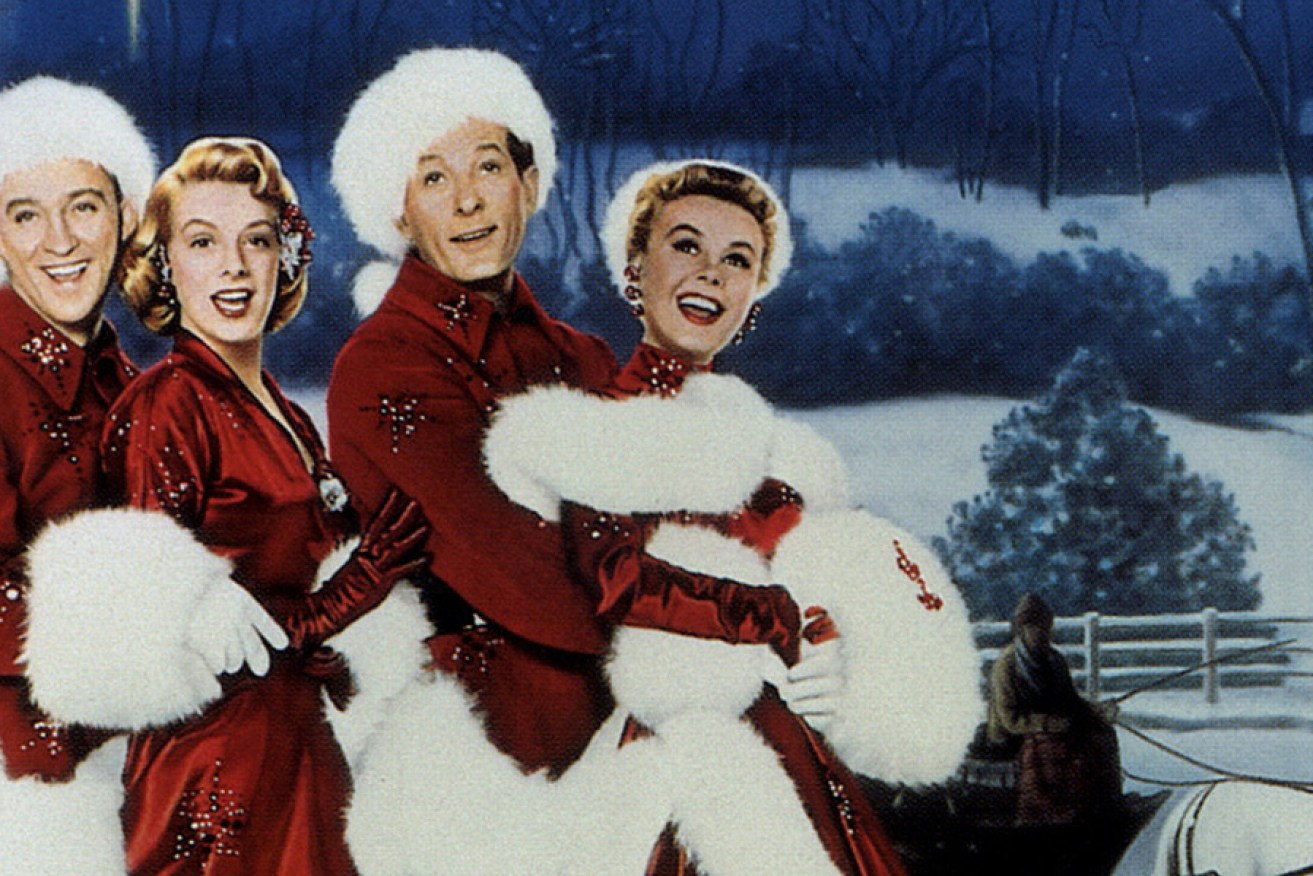Christmas songs can do more than torture retail staff trapped in department stores; they can also be important players in popular music history.
One of the most iconic Christmas songs, Bing Crosby’s 1942 recording of Irving Berlin’s “White Christmas”, has been described as “a cultural event transcending the insularities of the three [white, black and country] streams” of the American recording industry at the time of its release.
White Christmas: a crossover hit
The success of Crosby’s recording was a gift for the American recorded music industry at a time of segregation. The song itself (with and beyond Crosby) has been the subject of broader studies of nationalism, cultural industries and American identity.
A decade or so later, Elvis Presley broke through racial boundaries with “That’s Alright Mama”, his first recorded single in 1954. The recording was later heralded as “the beginning of rock and roll” because of its defiance of apparent industry wisdom.
Both Crosby and Presley were artists who managed to cross over, or cover, different audience groups. Such crossovers helped demonstrate the importance of a great performance and move the music industry from publishing towards recording.
Crosby’s 1942 recording was named the highest-selling single of all time by the Guinness Book of Records in 2009, putting it at the time ahead of the likes of The Beatles, The Rolling Stones, Elvis Presley, Madonna, Michael Jackson and Abba.
Not everyone agrees on the technicalities of the Guinness conclusion but the logic behind this apparent success is clear. Other recordings go in and out of fashion over the decades (think about how many denials and revivals folk has had), but Crosby’s recording is reliably popular – at least once every year.
Cashing in on Christmas
Bing has become something of a Christmas institution as a result of “White Christmas”. He appeared in the film White Christmas, as well as on various television “holiday specials”, including this charmingly creepy appearance with David Bowie:
Christmas songs provide an interesting opportunity – and anomaly – for the music industry broadly, too.
Financial success can last for generations, as playfully demonstrated by Nick Hornby with the character Will Freeman and his father’s fictional Christmas song, “Santa’s Super Sleigh”, in About a Boy.
And if a writer also happens to be a solid performer, the returns from Santa can double, as with George Michael’s gift that keeps giving, “Last Christmas” (1985).
Too much Christmas cheer?
Christmas song compilations can sometimes see promoters and musicians take the potential for seasonal sales a little too far.
In 1976 the Salsoul Orchestra released the LP “Christmas Jollies”, a Christmas song compilation album that AllMusic called “a predilection towards the growing disco novelty trend”. The recording was cheeky in terms of its musical arrangement and its cover art – featuring a windswept female model whose Santa-themed dress only just covered her backside.
It’s a problem that has been variously resolved either with heavy-handed Photoshop on some releases, or new editions that show the album cover from the waist up.
While it’s easy to dismiss Christmas recordings, the sheer volume of releases shows the phenomenon has legs in the music industry broadly. Everyone from Bob Dylan to Elvis Presley to James Brown, Motown and Frank Sinatra has had a go – with new artists getting in on the act each year.
A good Christmas cause
In 1984 the commercial Christmas song was used for good (or at least for a good cause), with Live Aid’s “Do they know it’s Christmas?”
The song’s combination of charity, season’s greetings and superstars took it to the top of the UK charts (as well as into a few record books). The recording was included in the 2007 documentary Songs That Changed The World.
Aussie cheer
Australian artists record their share of Christmas songs too. A cast of Triple J performers and friends released a charity single last week.
Rolf Harris’ “Six White Boomers” reminded listeners that kangaroos might be more helpful than reindeer to an Australian Santa – while The Wiggles have proclaimed that “It’s a Long Way to the North Pole”.
Beyond the novelty factor, Christmas songs can provide more lasting (and much less daggy) mainstream music as well.
Paul Kelly’s “How to Make Gravy”, a song originally commissioned for a local charity release, has since become a stable in his catalogue. “How to Make Gravy” sits easily in Kelly’s pub or festival set, but has also become so loved that it’s been named by Ben Anderson in The Daily Review as Australia’s only Christmas carol.
A rival for Kelly’s carol crown is Australian singer/songwriter Tim Minchin, whose 2010 song “White Wine in the Sun” is also a great mix of the cynical, sentimental and slightly twisted.
Written as a present for his young daughter, Minchin’s song is decidedly non-religious. It upset the Salvation Army so much that they refused his offer to donate proceeds from the song to them. Since 2010, November to January profits from the song have been donated to the National Autism Society – and will be again this year.
Listed by actor David Tennant as one of his Desert Island discs, the song also reportedly moved West End director Matthew Warchus to tears with its mixed emotions, and has been praised by writer Neil Gaiman as “my favourite Christmas song”.
It’s not such a great leap from “White Christmas” to “White Wine in the Sun” – and proof that Christmas songs continue to appeal.
Liz Giuffre is lecturer of Media, Music and Cultural Studies at Macquarie University. This article was first published on The Conversation.





